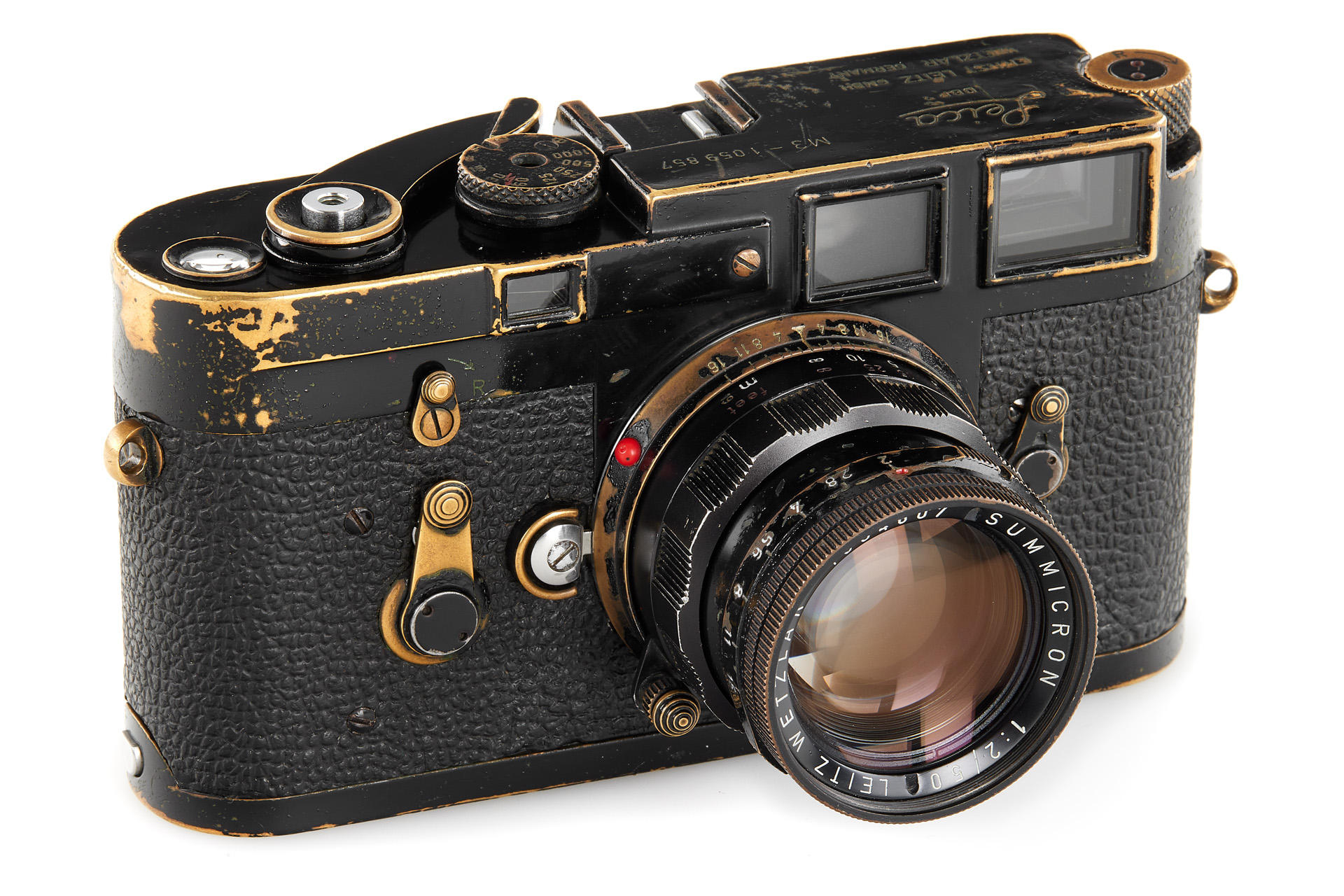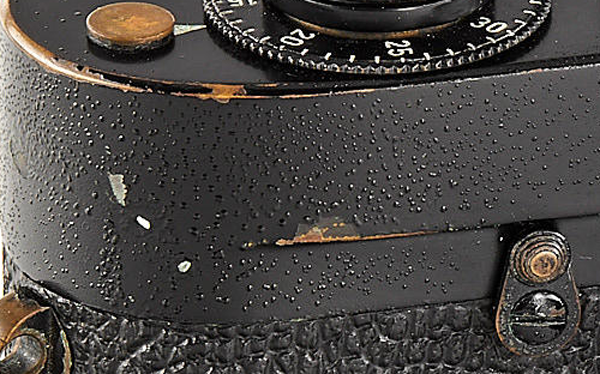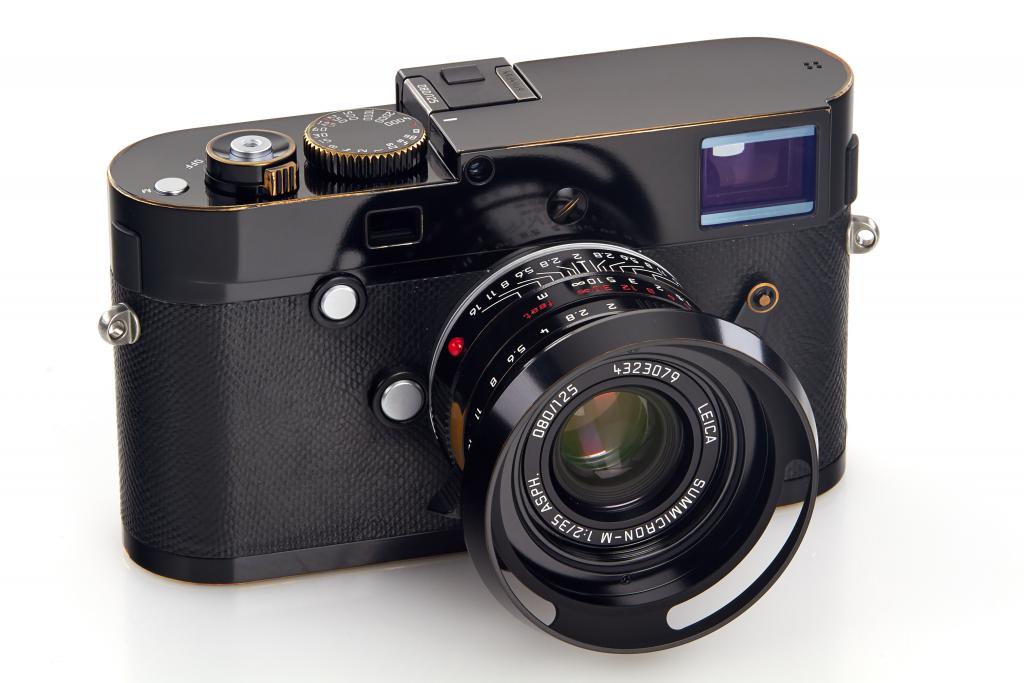25/06/2021
Leica Black Paint
Black (Paint) is beautiful
For many photographers, a black paint Leica – unobtrusive, discreet, yet with an air of unequivocal professionalism – is a coveted object of desire. What is it that makes black-finish cameras quite so enticing? We explore the reasons behind this ongoing trend, and take a look at past and future auctions in Vienna.
There is a good chance that those searching for a current black paint camera might gravitate towards an analogue Leica MP. The special aura that surrounds these models has drawn a following of ardent devotees – and there is one special M variant that exemplifies this fascination particularly well: in March 2015, Leica presented the M-P “Correspondent”, conceptualised by Lenny Kravitz for Kravitz Design. Limited to just 125 units worldwide, the set instantly became a sought-after collectors item. It is comprised of a Leica M-P Black Paint, two matching lenses (the Summicron-M 35 f/2 ASPH. and Leica Summilux-M 50 f/1.4 ASPH.), and a black leather briefcase with brass elements. The camera and lens exteriors were purposely distressed to reveal small patches of brass underneath the paint, in order to create a characterful, well-used appearance.
The result is a present-day camera that works perfectly, is specifically geared towards challenging conditions – yet already has the rugged charm of a faithful companion: it is a combination that inevitably makes collectors’ hearts beat faster.
An M that documents the human experience in the hands of press photographers, that helps illuminate and even shape audiences’ perceptions of world events, has long been the epitome of a professional reportage camera. Indeed, along with their rarity, the fascination for black paint Leicas is doubtlessly rooted in their contributions to press photography – a field that is inherently associated with reliable, resilient tools. This, in turn, makes the patina of a black paint Leica M deeply evocative.
Companies such as Leitz and Zeiss-Ikon were selling black-finish cameras as early as the 1930s. However, the black paint had a tendency to wear off fairly quickly, leaving the cameras looking ‘unsightly’. Quite inadvertently, this shortcoming (which Leica remedied in the 1970s with the M4 Black Chrome) set the course for black paint models to become a major trend: the supply of black paint cameras on the market was far lower than the demand; also, not every press photographer could afford a black paint Leica M3.
As a result, countless chrome models ended up being painted black – partly by Leica themselves, but also by rogue counterfeiters, who sold the repainted models (complete with fake documents) as overpriced originals, and continue to do so today. Anyone wishing to confirm that their black paint Leica is legitimate should contact Leica Classics or Leitz Photographica Auction, whose comprehensive files (including delivery and repair books, production records, etc.) can be used to verify the camera’s origins.
One of Leica’s most coveted rangefinder cameras is the MP, which was first presented to the public at photokina 1956. Only 412 units were produced; 141 of them featured a black finish, and were predominantly bought by professional photographers. Many famous Magnum photographers worked with an MP – a camera built at the suggestion of LIFE photographers Alfred Eisenstaedt and David Douglas Duncan. In fact, the Leica MP with serial number 2, which was originally shipped to New York press photographer Bob Schwalberg, may well have sparked the trend for black paint Leicas.

38th Leitz Photographica Auction
Several black paint cameras changed hands at the 38th Photographica Auction on June 12, 2021. Among them were some true rarities, such as an M2 (auction lot 98) in astonishingly good, original condition with the characteristically textured paint finish. The set, which also includes a matching black paint Summicron 5 cm f/2 and an original, very rare leather case, achieved a bid of 96,000 € (incl. premium). The auction catalogue also featured an M3 from a batch of 150 cameras produced in 1962; the camera, which came with a black-finish Summicron rigid 50mm f/2, went under the hammer for 55,000 € (incl. premium). Both the camera body and the lens are in original condition, and are distinguished by a beautiful patina – one of the characteristics that makes these models so desirable.

Leica M3 with matching Summicron rigid 50mm f/2, distinguished by a beautiful patina: this ensemble recently went under the hammer at the 38th Leitz Photographica Auction. The camera was part of a batch of 150 units produced in 1962.


Leica M2 in astonishingly good, original condition: the black paint features the characteristic ‘bubble’ texture; the camera was auctioned with a matching Summicron 5cm f/2 and an original, very rare leather case.
Commenting on the rising value of black paint cameras, auction expert Michal Kosakowski explains: “At our 17th auction in 2010, the M2 Black Paint with serial no. 1130115 went under the hammer for ‘only’ 2880 euros (incl. premium). In 2018, it was resold at our 32nd auction for 9600 euros (incl. premium). Today, this camera would be listed with an estimated auction price of 12,000 to 14,000 euros.” By the way: Fans of black paint cameras looking for a more moderate investment should keep their eyes open for a black paint Leica reflex model, as they are currently still available at considerably lower prices.
On June 24, 2021, Leica Camera launched a new M10-R Black Paint that continues the tradition of the company’s legendary black paint models.
Photos: Leica / Leitz Photographica Auction
Text: Tobias F. Habura-Stern / LFI Leica Fotografie International
